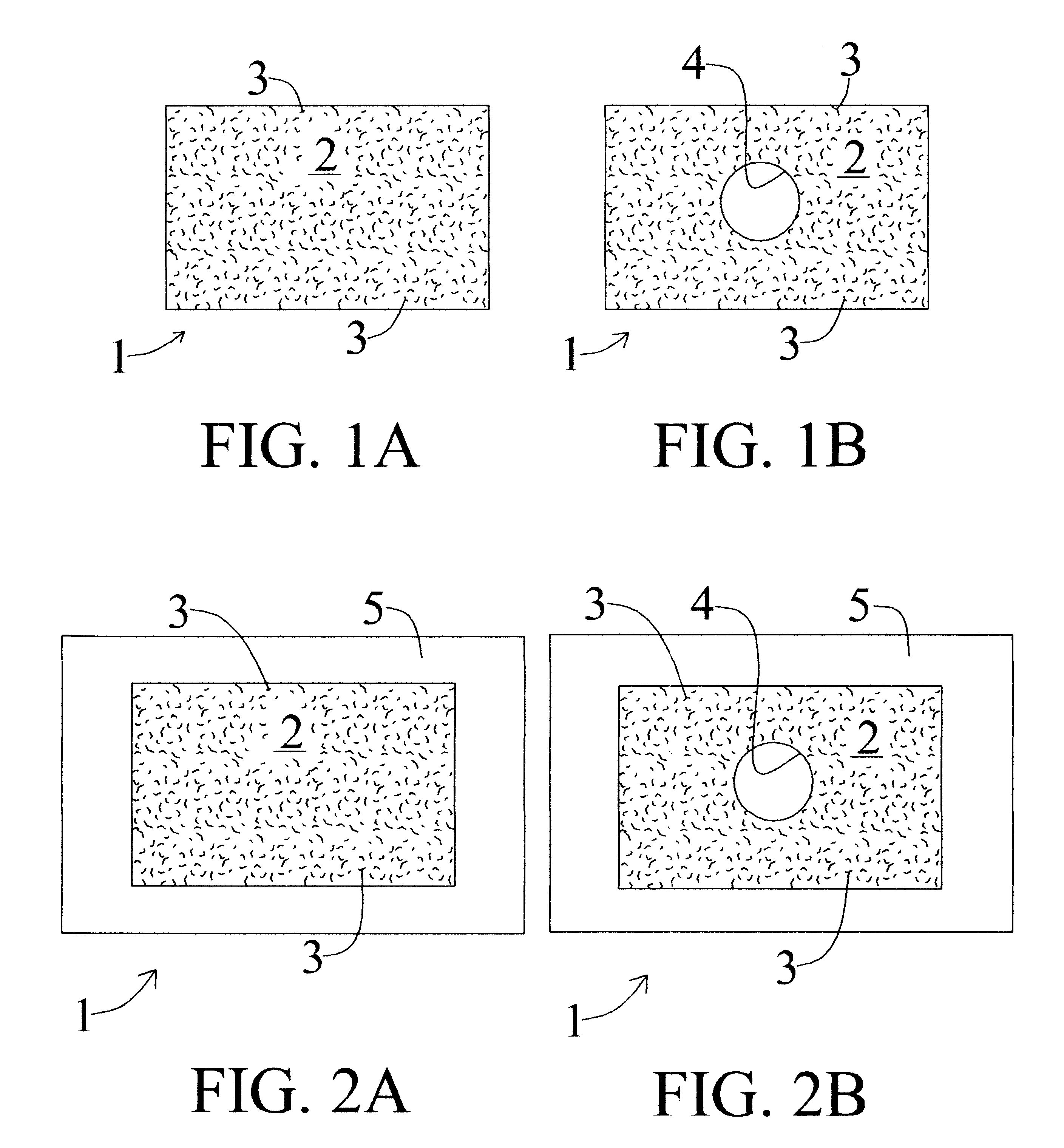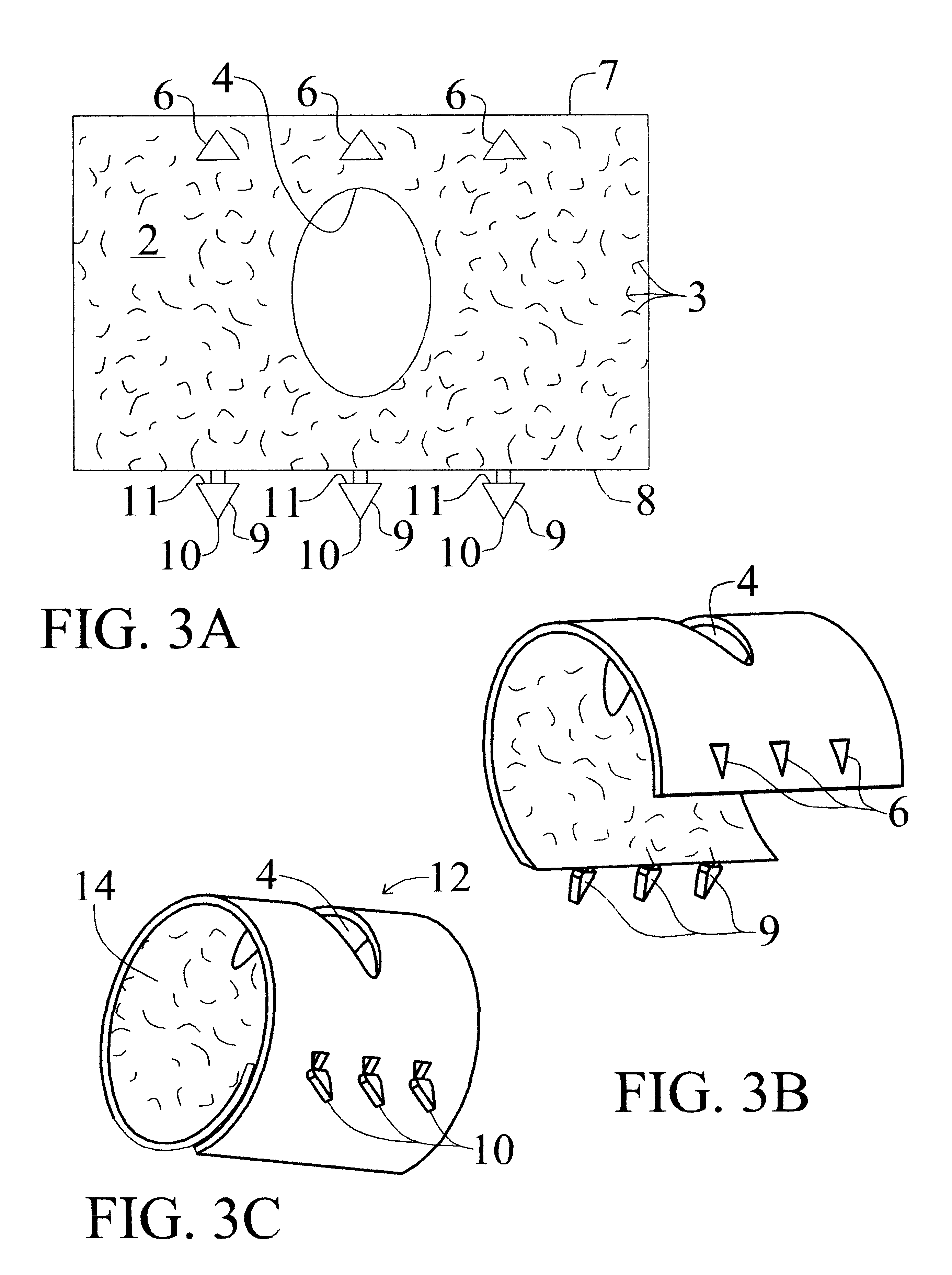Apparatus and methods for preventing or treating failure of hemodialysis vascular access and other vascular grafts
a technology for applied in the direction of drugs, prostheses, immunological disorders, etc., can solve the problems of occlusion and graft failure, rapid clinical deterioration, and failure of hemodialysis vascular access and other vascular grafts
- Summary
- Abstract
- Description
- Claims
- Application Information
AI Technical Summary
Benefits of technology
Problems solved by technology
Method used
Image
Examples
example 1
Inhibitory Effect of Different Antiprofileractive Agents
Prefabricated collagen matrices were placed in different antiproliferative drug solutions until complete saturation occurred. The antiproliferative drugs were chosen to represent the more active compounds capable of smooth muscle cell and fibroblast inhibition without inhibiting collagenase and elastase enzymes. (Collagenase and elastase enzymatically inhibit collagen accumulation--one cause of restenosis). The collagen matrices were saturated with these compounds at concentration of 25 .mu.g / ml lyophilized, washed with 0.066 M phosphate buffer (pH 7.4) at 37.degree. C. for 24 hours and cut in the shape of a disc with density of compound about 5 .mu.per cm.sup.2. After washing sterile discs, 15 mm in diameter were placed in 24-well culture plate and cells at a density of 5000 per cm.sup.2 were seeded. Five days later cell number was measured and enzymatic activity was evaluated in the aliquots of media via chromogenic substrate...
example 2
Capacity of Different Types of Matrices to Bind Rapamycin
In the next in vitro study, the ability of different matrices to bind Rapamycin was tested. A prefabricated (BioMend, Sulzer Calcitek, Inc or Biopatch, Ethicon Inc, containing collagen-alginate) collagen matrix with Rapamycin was prepared as described in Example 1 at initial Rapamycin concentration of 250 .mu.g / ml. Prefabricated chitosan (using technique described in: Almin, C., Chunlin, H., Juliang, B. et al "Antibiotic loaded chitosan bar. In vitro, in vivo study of a possible treatment for osteomyelitis," Clin Orthop pp. 239-247 (September 1999) and fibrin matrices (using technique mentioned in example 5) were also placed in 250 .mu.g / ml of rapamycin in DMSO solution until complete saturation occurred. After solvent evaporation, the matrices combined with drugs were washed with 0.066 M phosphate buffer (pH 7.4) at 37.degree. C. for 24 hours.
To compare matrix capacity, fluorescent Rapamycin derivate loaded onto 1.88 cm.sup.2...
example 3
Delivery Systems Uusing Liposomes
Liposomes represent a form of drug delivery system, and offer controlled release of biologically active agents. They are used in pharmaceutical formulations especially for water insoluble drugs. Rapamycin is a typical example. Liposomal entrapment has been shown to have considerable effect on the pharmacokinetics and tissue distribution of administered drugs. The formulations tested included nonionic liposomal formulation composed of glyceryl dilaureate (Sigma Chemicals, St Louis, Mo.), cholesterol(Sigma Chemicals, St. Louis, Mo.), and polyoxylene-10-stearyl (Sigma Chemicals, St. Louis, Mo.) either at a weight ratio of 56:12:32 (Formulation 1) or nonionic 40% hydroalcoholic oil-in-water liposomal emulsion containing isopropyl myristate (Sigma Chemicals, St. Louis, Mo.) and mineral oil (Sigma Chemicals, St. Louis, Mo.) (Formulation 2). Rapamycin was entrapped into each formulation at a concentration of 250 .mu.g / ml in dimethylsulfoxide or isopropanol ...
PUM
| Property | Measurement | Unit |
|---|---|---|
| pore sizes | aaaaa | aaaaa |
| thickness | aaaaa | aaaaa |
| thickness | aaaaa | aaaaa |
Abstract
Description
Claims
Application Information
 Login to View More
Login to View More - R&D
- Intellectual Property
- Life Sciences
- Materials
- Tech Scout
- Unparalleled Data Quality
- Higher Quality Content
- 60% Fewer Hallucinations
Browse by: Latest US Patents, China's latest patents, Technical Efficacy Thesaurus, Application Domain, Technology Topic, Popular Technical Reports.
© 2025 PatSnap. All rights reserved.Legal|Privacy policy|Modern Slavery Act Transparency Statement|Sitemap|About US| Contact US: help@patsnap.com



